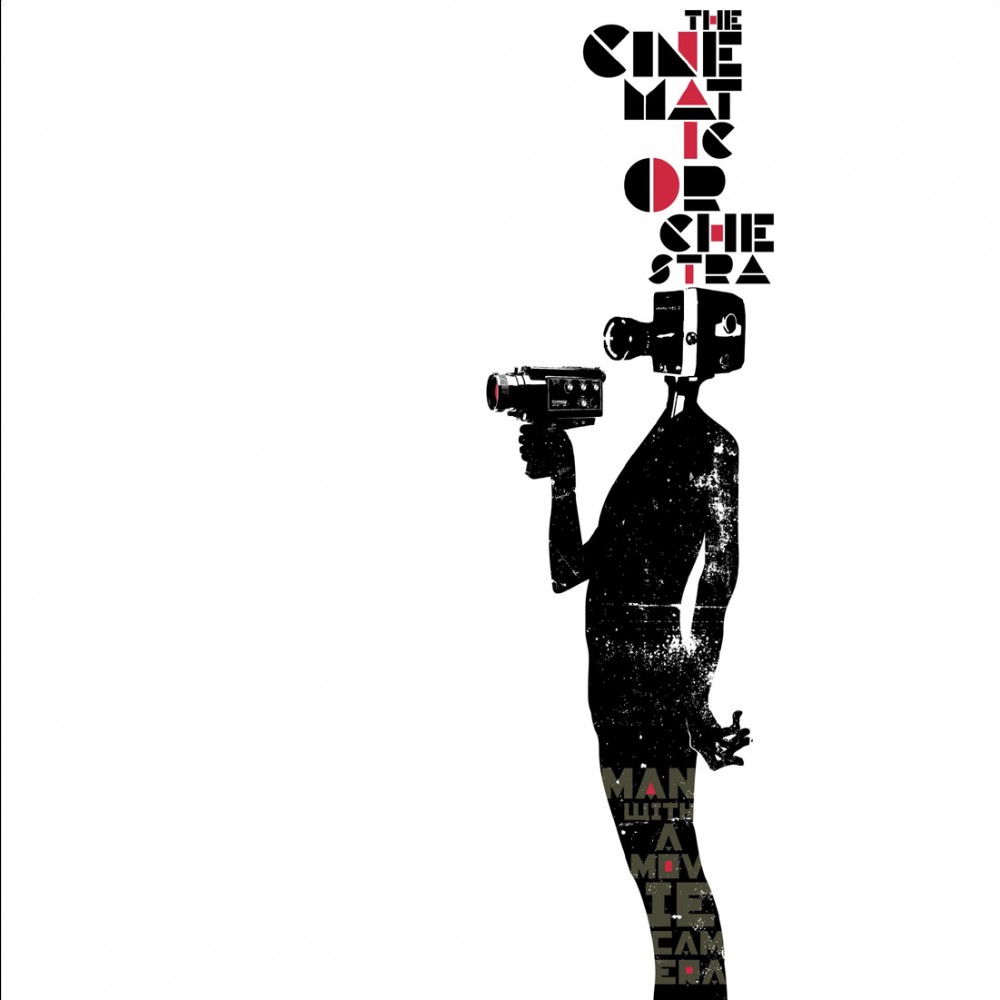Scottish singer-songwriter Iona Zajac is first up tonight, and it’s clear we’re a sitting down kind of crowd as the middle (standing) section of the room is almost empty, but around the edges and upstairs there’s a solid audience at this early stage. Her whispery arrangements and powerful voice echo gorgeously around Queen’s Hall, and she remarks on the amazingly quiet punters who seem enraptured by her tales of shit men and rubbish jubilees. Though she’s now based in Dublin, there’s still a strong kinship with Scotland which is exemplified through her rendition of The Burning of Auchindoun, accompanied simply by what sounds like a sustained bagpipe note, complete with a flourish of keys to finish.
Tonight’s main attraction is a 20th anniversary celebration of The Cinematic Orchestra’s wonderful 2003 album, Man with a Movie Camera. The original album was a commissioned soundtrack to the 1929 Soviet film of the same name. The sounds we hear tonight are much as they are on that album, but the live visuals provided by Ben Olsen make something new and exciting of the source material.
Not that isn’t invigorating in its own right; the swing of Phil France’s double bass and Luke Flowers’ brushed cymbals and cracked snare give a strong jazz feel, while Jason Swinscoe keeps everything ticking over from his programming rig, chock-full of pedals, keyboards and synths. Despite the obvious choreography, there’s a sense of improvisatory energy between the band, a comfort in their mutual ability and understanding to react to each other’s whims.
Even without Olsen it would be a marvellous showcase, but his live visuals take things to another level. He becomes the titular “man with a movie camera” as he moves about the stage, switching between stationary shots from within a vintage(-looking) box contraption (including some from the original film), and dynamic, reactive shots of the band, his typewriter or the audience that are then manipulated in real time. The most impressive feat comes as he spins a device that operates like a mutoscope or flip book, which he films and also alters as it goes, changing the images projected on the fly into a coherent order that is then projected on the big screen.
Neither the music nor the visuals ever seek to outshine each other, but work in a state of contented harmony, only momentarily interrupted by the occasional crescendo, saxophone wail or the vaunted climax that closes the main set. The Cinematic Orchestra are a rare group that are able to perform at the highest level without grandstanding, to combine styles without dilution and to be truly multimedia without any element feeling tacked on.


Comments